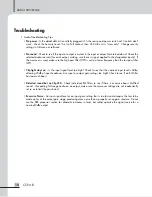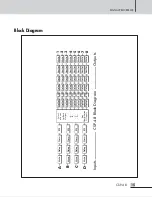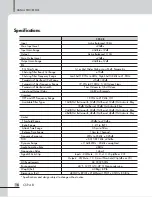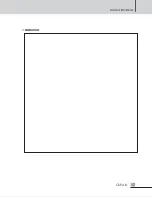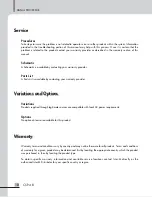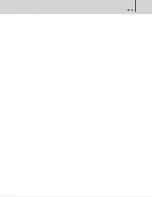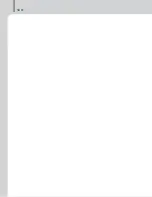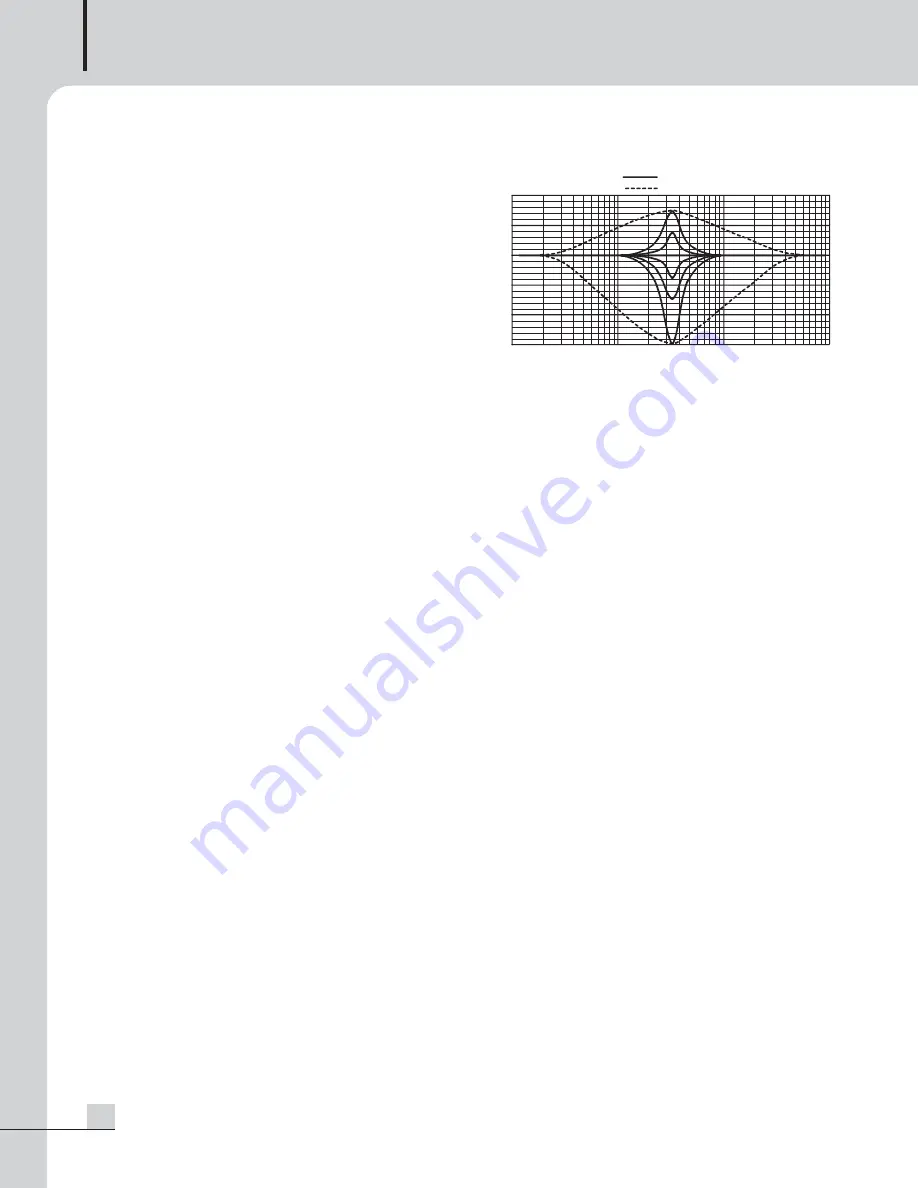
SIGNAL PROCESSOR
6
CSP-4.8
Parametric EQ (PEQ) uses peak filters with the
ability to control boost or cut, frequency center,
and bandwidth. Think of one band of parametric
EQ as a single graphic equalizer fader except
that the frequency is variable, not fixed, and that
the bandwidth, or how "wide" the filter affects the
frequency spectrum at the center frequency, is
completely variable. The smaller the bandwidth,
the less the audio signal on either side of the
frequency center is boost or cut, whereas a larger
"wider" bandwidth produces an audible change
to the overall tone of a signal. Parametric filters are best used to hunt down and eliminate problem feedback
frequencies, add or remove a characteristic "hot spot" from microphones, or clean up room resonance
situations. It is well worth the time getting proficient with parametric EQ filters, as they offer the best solution
to many EQ problems.
The CSP-4.8 parametric filters have a boost/cut range of +15dB to -30dB. There is more cut than boost
because one of the more common uses for parametric filters is to dramatically cut, or "notch out", very
narrow frequencies (low bandwidth) in order to eliminate system feedback problems.
Every instance of a parametric EQ filter has a center frequency selected. The factory default is 1kHz, but
each filter's center frequency is adjustable from 19.7Hz to 21.9kHz in 1/24 octave steps. Carefully
sweeping a narrow bandwidth filter through a problem feedback area, with just a slight boost, is a quick
way to find the exact frequency causing trouble. Once the offensive frequency has been found, cut the filters
level, and then the bandwidth is adjusted as narrow as possible while still eliminating the feedback problem.
Bandwidth is adjustable from about 1/64 octave to four octaves, and the lower the bandwidth, the less
audible the filter action will be. Finding the problem frequency is relatively easy, but finding the best
combination of cut and bandwidth takes a little practice. Again, it is well worth the time becoming
comfortable with the notching procedure, so that problems can be quickly addressed with a sufficient but
minimal amount of correction. The EQ functions on all four inputs and eight outputs are switched in or out
on an individual channel basis. In other words, each input or output has one "switch" for all of its EQ filters.
If certain filters are not going to be used within a channel, simply leave the gain for that filter at 0.0dB, and
the filter will have no effect.
For an excellent interactive display of the way parametric and shelving filters work, experiment with the CSP-
4.8 EQ section of Protea NE Software. The software works whether a unit is connected or not, so it is an
invaluable teaching tool as well as an audio setup tool for the CSP-4.8. The program is shipped with the
CSP-4.8, but is also available on the Ashly web site.
200Hz
2KHz
20KHz
20Hz
0dB
-10dB
-20dB
+10dB
+20dB
-30dB
CSP-4.8 Shelving Filters
Wide (High) Bandwidth
Narrow (Low) Bandwidth
Summary of Contents for CSP-4.8
Page 2: ...Operation Manual Signal Processor CSP 4 8...
Page 20: ...SIGNAL PROCESSOR 17 CSP 4 8 DIMENSIONS...
Page 22: ...13 DPA 430H 15 MA 106 NOTE...
Page 23: ...12 DPA 430H NOTE...
Page 24: ...3 DPA 430H...

















